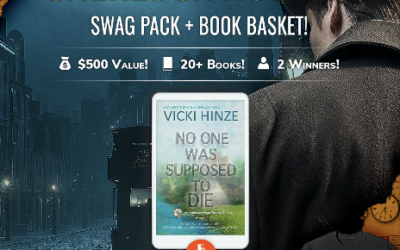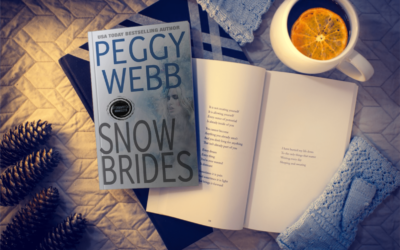Vicki Hinze © 2003-2011
In crafting a novel, some experts say plot comes first.
Some say character leads the way.
Some say it’s neither, and some say it’s both.
They’re all right.
And wrong.
As writers, we take the basic methods established for accomplishing a craft task, and amend those methods to suit us. We find our natural rhythm, our own way that works. Since accomplishing the task is our goal, not the method we use to achieve that end, it’s imperative that we remain flexible and open-minded—perpetual students, if you will—so that when a new-to-us method comes along, we explore its possibilities.
Before looking specifically at plotting, let’s look at what we hope to achieve: a well-crafted novel. Well, what is a well-crafted novel? It’s one where the plot, the characters, the setting and theme are all tightly interwoven. So tightly interwoven that if one novel element changes, one character changes, one story event changes, then the entire novel changes.
Think of the novel as a molecular structure. If one molecule moves out of place, or its aspects change, then the molecular structure is irrevocably changed. Forever altered. Different. Why? Because each molecule that changes forces additional changes on the other molecules. They must alter and adapt to fit with the altered molecule.
For example. Your heroineis a New York socialite. Your settingis Pinehurst, Mississippi: a small, rural community. Your socialite is matter out of place, and that can be good because matter out of place creates conflict.
But let’s say your heroineacts, thinks, and reacts as a rural community Mississippian rather than the New York socialite she purportedly is, and must be for the novel to accomplish its goal.
This character has stepped out of her assigned space in the intended molecular structure. There’s a weak link, and she’s it. Now the other novel elements must shift and alter to fill the gap created by this shift to sustain logic, belief, and novel credibility.
That this metamorphosis occurs is a blessing to writers, though some don’t view it is as one, but as a complication creating challenges that require a great deal of thought and sweat to correct. And while that thought and sweat might well be necessary, they are a blessing, an opportunity. And when these shifts settle and the writer searches diligently and can find no weak links, then the writer knows that he has a cohesive whole structurethat will bear the weight of its tasks.
One effective way to craft a novel is to build plot, character, and setting and theme simultaneously. Keeping in mind the three things a reader will not forgive an author , consider taking the following steps:
1. What do you want the novel to say? 2. Who is best able to say what you want said?
3. How can this message be best depicted?
4. Where can this message be best depicted?
In answering the above four questions, you go a long way in defining the novel elements. Do you see how each element interacts with all the others? That they’re codependent? What you want to say defines to a degree the person who would/could say it. The definition of that person, his character, to a degree defines how and where he’s apt to say it.
Were your message a different one, you’d likely need a different character to convey it, which would alter the best way to convey the message and the place where the message is likely to be conveyed. Different people are confronted with different situations in different places. Typically, ones that are familiar to them.
An extreme example: Who is most apt to suffer hunger?
1. A homeless person who lives on the streets in Los Angeles?
2. Or a wealthy, socialite who lives in a Manhattan penthouse?
So to build plot, we must build character and setting in the context of our chosen theme. We must take a specific character, in a specific setting, in a defined situation that specific character is apt to encounter and that applies to conveying our messageand then build on it.
How do we build? By asking “what if” and “why”—two of the writer’s best tools for building plot, for building a cohesive novel.
Let’s say our message or theme is: fear falls to courage and faith.
Now we need a character. A heroine. One who is openly affectionate, who loves crowds, loves being busy, loves a frenzied pace in all areas of her life. Why? Because she fears being alone.
Now we need another character.A hero. Because she is openly affectionate, he should be reserved, closed. Why? Open affection was held in disdain by his family.Why?
Instant conflict. Instant interest. If you have no conflict, you have no story. She wants him to be more open, he wants her to be more reserved. That equals conflict, which will conclude in compromise, or severance.
Now our heroine fears being alone, and she also fears flying. Why? Perhaps her first husband was killed in a crash. Or perhaps we should dig a little deeper. A well-adjusted adult would recognize this as fear and address it. But what if heroine lost her entire family in a plane crash when she was young? As an adult, she’d likely recognize the fear, but having lived with that fear for so long, it’d be second nature—habit. And bad habits are hardest to break, right? Much better, stronger motivation, more capable of carrying more weight in the novel.
Now our hero must increase the stakes. He must fly. And maybe he asks heroine to fly with him. She’ll refuse
Okay, heroine’s character building is coming along, as is the plot and to a degree, the setting. Now what if hero takes the flight and crashes? What if heroine is told he’s dead? This reinforces her fear of loving and losing, magnifies her fears, so that courage and faith are even harder for her to feel and act upon.
So if he’s dead, he can’t generate more conflict. Without more conflict the story’s over. But it can’t be over because we haven’t conveyed our message and the heroine has not grown. The ending isn’t satisfying. So. . . .
Let’s say hero is not dead. Why was heroine told he was? Who told heroine he was? Now, we have a conspiracy to separate these two. Why? Who?
We need a villain. A conspirator. Who is this person? Why is he/she perpetrating this conspiracy? What does he/she gain? What does he/she stand to lose? How does Conspirator pull-off the conspiracy without making the hero and heroine look stupid for believing it? Can the conspirator pull this off alone? Or does Conspirator need assistance.
Let’s say hero’s mother is the conspirator. She’s a recent widow and doesn’t want to share her son. Let’s say Co-Conspirator is heroine’s ex-fiancé and hero’s best friend. Is he participating for revenge? Too cliché. What if he really thinks hero is dead? What if Conspirator is conspiring with and against Co-Conspirator simultaneously?What if Co-Conspirator thinks he’s helping heroine and doesn’t realize that there is a conspiracy?
Now you’re building everyone’s character, and moving the plot forward. And you keep using these same what if and who and why and how and where and what questions to continue to build the story elements until you convey the message you want conveyed and the story reaches its natural conclusion.
By building, or developing, plot and characters simultaneously affixed on theme, you know that the novel segments are tightly interwoven. That no one person can change without altering the entire novel significantly.
When plotting:
* Don’t always take the first “next step” that comes to mind. Explore it, but dig deeper and ponder the other possibilities that come to mind, too. Look for those odd, unexpected twists, where you veer from the norm and are delighted and surprised. Those steps typically delight and surprise the reader, too.
* Don’t accept coincidence as a substitute for well-integrated motivation. It isn’t. And, while coincidence occurs with monotonous regularity in life, novels require logical, express motivation.
* Don’t keep any “next step”which doesn’t:
1. advance the plot
2. deepen characterization
3. end with a hook that incites reader to read on
4. come as a natural progression of what’s been foreshadowed earlier
5. contain conflict
6. move characters either closer to or farther from their goals
7. contain logical, believable, and reasonable motivation
If you plot and build characters true to their settings and stations in life, you maintain respect for the integrity of each novel element, then you will craft a plot that is unique to you, but one universal to others. This is instrumental in writing fiction.
Having accomplished the above, you now have a skeleton plot ready to be tested on the plot board for gaps in logic, in sequencing, in characterization, in motivation and conflict. Now you refine and flesh out the skeleton. You foreshadow major, coming events in Chapter 4 in Chapter 3. You lay the foundations upon which you build.
On the plot board, “holes” become glaringly apparent. So do threads introduced that were not pulled through the novel.
Remember the molecular structure? Well, here on the plot board, you look at each molecule separately to make sure it’s strong enough to support its weight in the structure. If it’s not,, strengthen it until it is strong enough.
When you’ve gone over the plot board, examined each element separately and in relation to the whole, and you’re satisfied you have a cohesive whole, then you’re ready to proceed to a new plot test—provided your goal is selling this novel.
* Is this novel commercial?
* Does it fit into a genre slot and fit the criteria of that genre?
* If mainstream, does the tone, style, and scope fit that of a mainstream novel?
* Is the novel “timeless” or will it be dated, thus a poor commercial risk?
* Is the novel’s story-line fresh, or cliché?
* Is this a story you want to write?
Adjust the novel elements as needed to suit your personal goals for the novel, then write it!
FYI: There’s an article specifically on the Plot Board in the Library.




